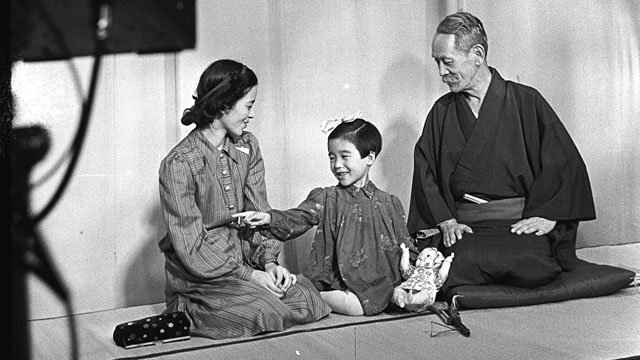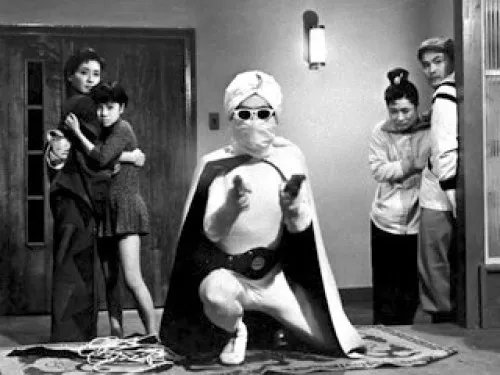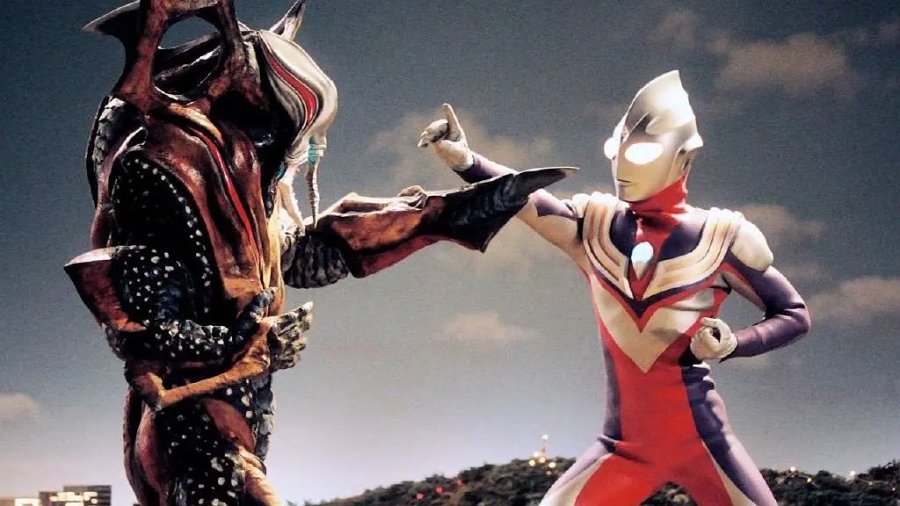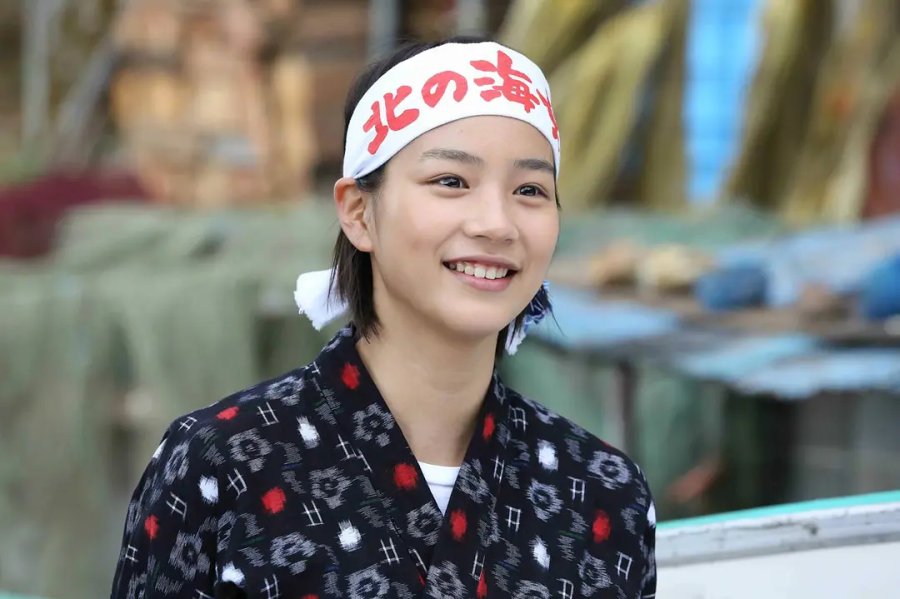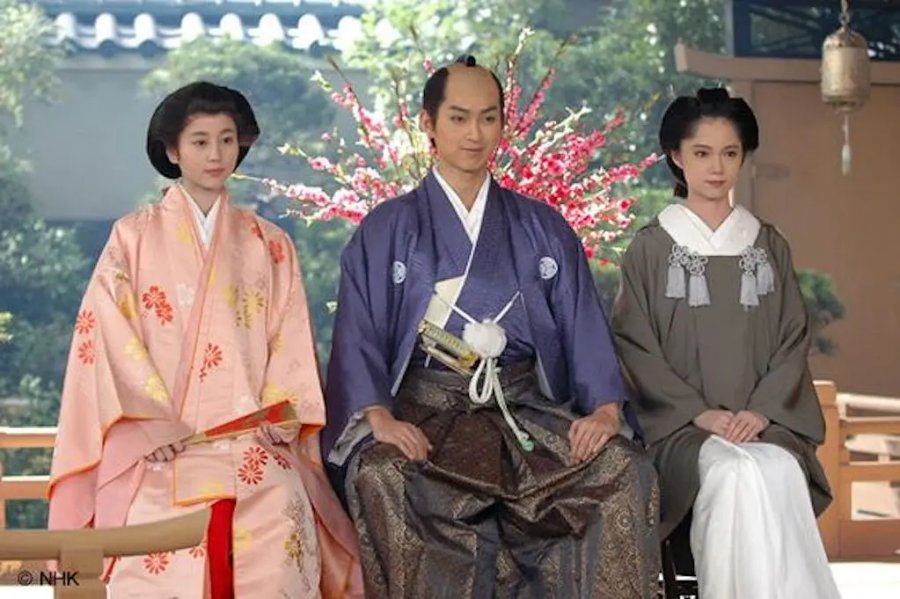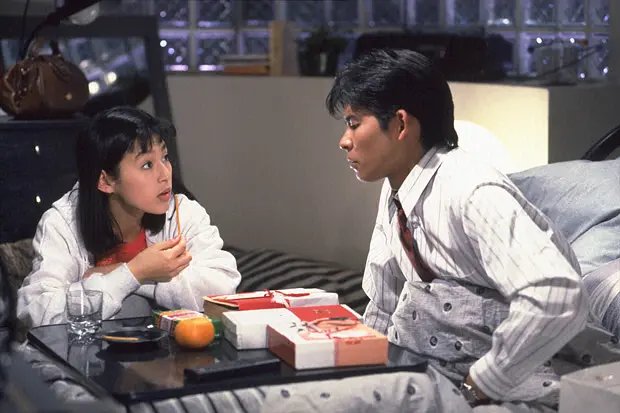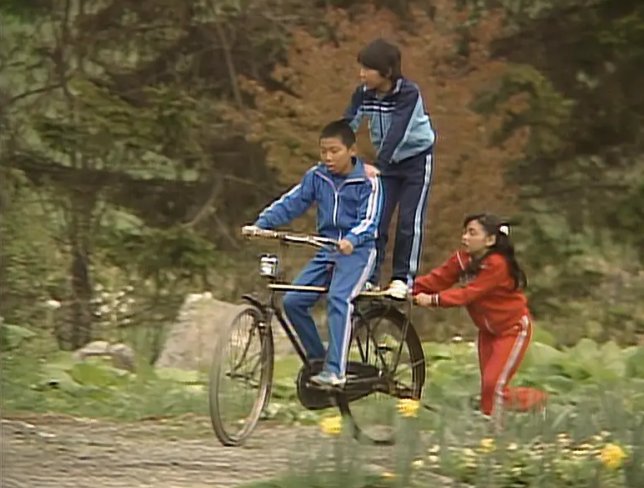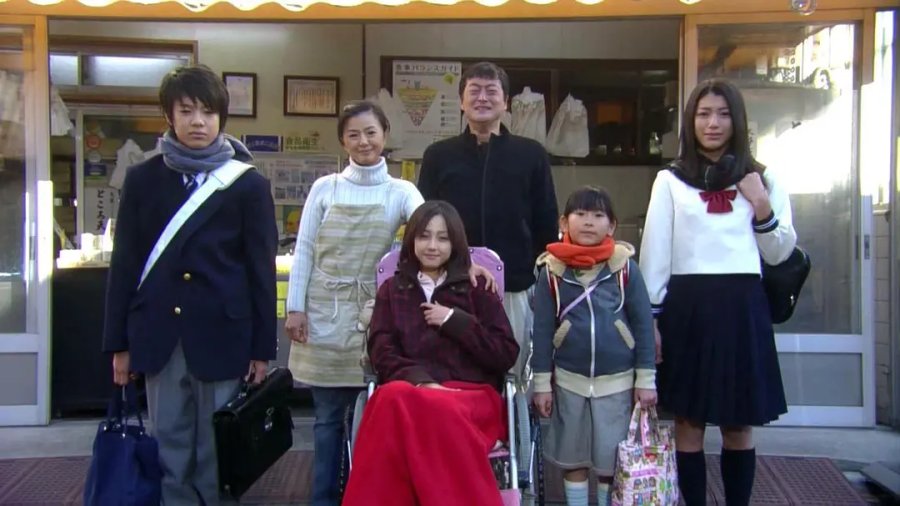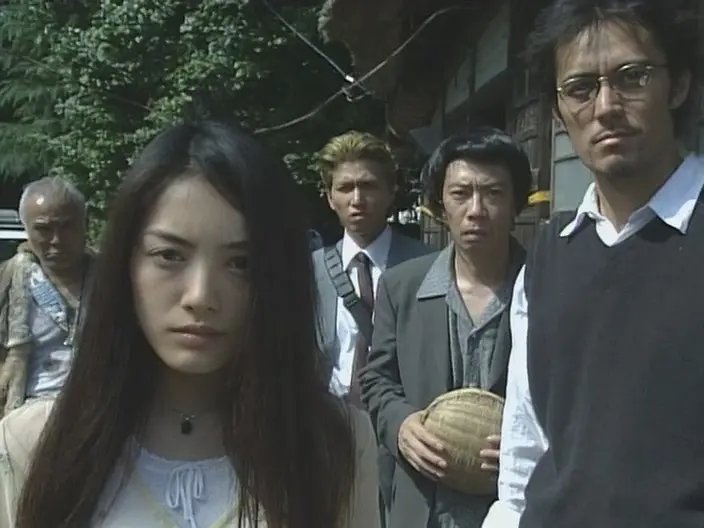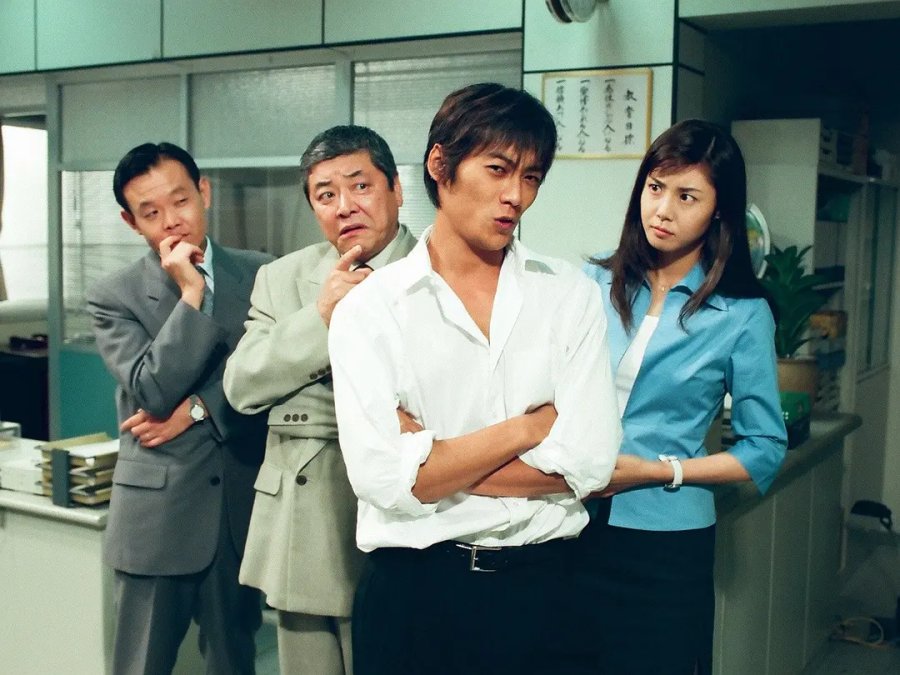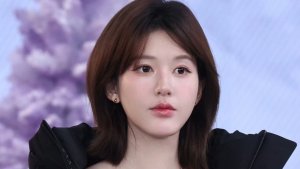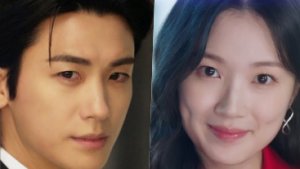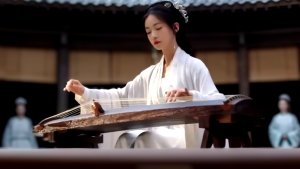 The Presence of Arts in The Double
The Presence of Arts in The Double
Introduction |
Japan has been making great dramas for many decades, but they don't get the attention they deserve, so today, I hope to change that! I will take you on a journey through the history of J-dramas and introduce you to some of the most popular and influential dramas of each decade.
The information in this article comes from books, academic articles, and online articles. For further reading, the references are provided at the end of the article.
The Birth of Japanese TV |
NHK (Nippon Hoso Kyokai, the Japanese Broadcasting Corporation) started experimenting with television in 1939 (Clements x-xi). The first television drama was Yugemae (1940), a 12-minute short about two children waiting for their mother to return home. Few people watched it because television sets were not available to the public, and NHK stopped broadcasting in 1941 because of World War II.
Yugemae
The 1950s saw the birth of many new television genres. Early broadcasts included Newly Wed Album (1952), a light comedy, Yoshitsune and the Thousand Cherry Trees (1953), based on a Kabuki play, and Flute on the Mountain Path (1953), based on a Japanese folktale (Clements xi-xii). Flute on the Mountain Path was broadcast live and featured the first blooper on Japanese TV when a cameraman accidentally filmed the lead actress changing her costume.
Other broadcasts of the 1950s included Hanshichi, a samurai detective story and the first period drama, Sunday Diary of My Home (1953), a drama about family life, Todoroki Sensei (1955), the first manga adaptation for television, and Crime Journalist, the first workplace drama (Clements xiii-xvii). In the late 1950s, Japanese TV started to broadcast in color, in response to American color TV shows.
Tokusatsu (special effects) |
The two main subgenres of tokusatsu are kaiju (giant monsters) and superheroes, and sometimes the two subgenres are combined. The first kaiju film was Godzilla (1954), inspired by a true story about a fishing boat overwhelmed by radiation from a nuclear test, as well as the American film The Beast from 20,000 Fathoms (1953) (Salas part 1).
Early superhero films included Golden Bat (1950), featuring a kamishibai theater character from the 1930s, and the film serial Super Giant (1957) (Salas part 2). Super Giant was an alien superhero who wore tights and a cape, inspired by Adventures of Superman (1952), an American series that was popular in Japan (Freedman and Slade). The first Japanese superhero TV series was Moonlight Mask (1958).
Moonlight Mask
The superhero genre is very popular with children, and by the 1970s, it dominated children's television programming (Freedman and Slade). These superheroes undergo "henshin" (transformation), and the theatrical combat is influenced by Kabuki theater. Popular franchises include Ultraman, Kamen Rider, and Super Sentai, beginning with Ultra Q (1966), Kamen Rider (1971), and Himitsu Sentai Goranger (1975), respectively. The American series Mighty Morphin' Power Rangers was made using Super Sentai footage, starting with Kyouryuu Sentai Zyuranger (1992) (Clements xxviii-xxix).
Ultraman Tiga (1996)
Another series popular with children was Saiyuki (1978), based on the classic Chinese novel Journey to the West. It was dubbed into English and became a cult classic in the U.K. Children enjoyed watching the larger-than-life characters and liked to imitate the martial arts (Geoghegan).
Asadora (morning dramas) |
NHK started broadcasting asadoras in the 1960s. They are broadcast in the morning, 15 minutes per episode. Originally they ran for a year, but later they were shortened to 6 months. Each series tells the story of a usually female heroine in her struggle for personal fulfillment and happiness (Es et al. 134). The first asadora was Musume to Watashi (1961), which used a narrator so that housewives would be able to watch or listen to it as they did their housework (Skov 80).
Asadoras have been popular since their inception, but their popularity started to decline in the mid-1970s as more married women were working (Skov 80). Oshin (1983) was an attempt to recover the lost popularity by appealing to core Japanese values (Skov 86). It was the most successful asadora of all time, with average audience ratings of 52.6%. It follows the life of Oshin, who works her way up from a poor peasant girl to the owner of a supermarket chain (Es et al. 137). Oshin became a morning ritual for many people and a subject of everyday conversation.
Oshin
Asadoras remain popular today, regularly achieving audience ratings of over 20%. A more recent example is Amachan (2013), which tells the story of a high school student who becomes a diver, and eventually becomes an idol (Es et al. 138). Amachan helped to restore the public image of Iwate Prefecture after the triple disaster of 2011 (earthquake, tsunami, and nuclear meltdown), and tourism increased by 86% (Es et al. 142).
Amachan
Taiga (historical dramas) |
NHK started broadcasting taiga dramas in the 1960s. They are broadcast at prime time (8 pm) and run for a year. Taiga dramas are usually set in the pre-modern period (up to the end of the Edo Period), and the protagonist is typically a famous historical figure (Seaton 84). Teiji Nagasawa, director of NHK's department of entertainment, was inspired to produce Japanese period dramas after watching American westerns set in the recent past (Clements xix). He cast the movie star Keiji Sada in the first taiga drama, Hana no Shogai (1963). As Clements explains, movie studios banned movie stars from appearing in television shows, so this effectively broke the ban.
Recent popular taiga dramas include Atsu Hime (2008) and Ryomaden (2010). Like asadoras, taiga dramas sometimes induce tourism. For example, tourism to sites related to Sakamoto Ryoma tripled in the year that Ryomaden was shown (Seaton 93).
Atsu Hime
In 1981, TV Asahi broadcast the historical mini-series Shogun (1980), an American-Japanese co-production. It was popular in America, but Japanese audiences criticized the fictionalized events because they were used to watching taiga dramas, which are more historically accurate (Clements xxiv).
Trendy Dramas (urban love stories) |
Trendy dramas originated in the late 1980s at Fuji TV. Most dramas at the time targeted women over 40. Ota Toru, who became a producer in his late 20s, wanted to produce dramas that targeted women in their 20s (Iwabuchi 70-72). Trendy dramas of this time, such as Dakishimetai (1988), feature love affairs between good-looking actors with fashionable lifestyles, focusing on setting, music, and cast more than content. People criticized these dramas as shallow, but the ratings were excellent.
In 1989, interest in trendy dramas started to wane, so Ota recruited new young writers to create poignant love stories, focusing more on inner emotions (Iwabuchi 46). Trendy dramas produced after 1990, such as Tokyo Love Story (1991), Long Vacation (1996), and Love Generation (1997), are sometimes referred to as "post-trendy dramas" or "pure love dramas" (Iwabuchi 72-74). According to Ota, the key to Tokyo Love Story's success was the woman's unhesitating love and the man's indecisiveness because it allowed viewers to sympathize with the woman.
Tokyo Love Story
After Tokyo Love Story, many trendy dramas followed a similar formula of unrequited love or tragic love. Before Tokyo Love Story, producers avoided producing tearjerkers, but after Tokyo Love Story, many people felt that dramas should make them cry (Iwabuchi 74, 83). Tokyo Love Story was also based on a manga, so its success led to more manga adaptations (Clements xxv). Trendy dramas were popular throughout East Asia and inspired other countries such as Korea, Taiwan, and China to produce their own trendy dramas (Iwabuchi 256; Zhu 89-90).
According to Ota Toru, Fuji TV had three major categories of dramas (Iwabuchi 80). In addition to the trendy dramas discussed above, there were also rural dramas such as Kita no Kuni Kara (1981), set in a rural village in Hokkaido, and detective dramas such as Furuhata Ninzaburo (1994).
Kita no Kuni Kara
Disability and Illness |
Disability dramas originated in the 1970s but gained more popularity with the broadcast of Under One Roof (1993), which featured a character in a wheelchair (Clements xxvi). According to Ota Toru, all of his big hits (including Under One Roof) follow a similar character pattern to Tokyo Love Story (an indecisive guy, a hateful woman, and a poor adorable woman), sometimes reversing the genders or focusing on different themes (Iwabuchi 74). For example, Under One Roof focuses more on sibling relationships.
Many dramas featuring either a disability or an illness have been made since then, for example, blindness in Kono yo no Hate (1994), deafness in Heaven's Coin (1995), HIV in Kamisama Mou Sukoshi Dake (1997), heart disease in Summer Snow (2000), and terminal illnesses in Beautiful Life (2000), 1 Litre no Namida (2005), and Boku no Ita Jikan (2014). The popularity of tearjerkers, as discussed earlier, perhaps may explain the popularity of illness dramas, which often end tragically.
1 Litre no Namida is currently the highest-rated Japanese drama on MyDramaList. Reviewers praised the drama for its message of living life to the fullest and not giving up easily, and is based on a true story that makes it feel more realistic (Fann 63).
1 Litre no Namida
Thriller |
Interest in thriller and horror genres increased following Night Head (1992), The X-Files (1993), and the Ring (1998) movie (Clements xxvi). Japanese horror often features supernatural elements, influenced by the religious traditions of Buddhism and Shinto, as well as Kabuki and Noh theater (Clyndes). Similar to The X-Files and Ring, the thriller drama Trick (2000) is about investigating the supernatural, although Trick focuses on debunking the supernatural.
Trick
Hanzawa Naoki (2013), a workplace thriller drama set in a bank, was very popular among Japanese salarymen, who viewed Hanzawa as a hero for his strong principles and his willingness to defy his superiors (Blair, Season Finale). Its final episode achieved a rating of 42.2%, the highest rating in three decades.
School |
School dramas are usually set in high school and occasionally college. GTO (1998), based on a manga, was the most popular school drama of the 1990s. It was inspired by 3-nen B-gumi Kinpachi Sensei (1979), an earlier "unlikely educator" drama that features a similarly passionate and idealistic teacher. GTO tells the story of Onizuka, a gangster-turned-teacher who cares for his students and helps them with their problems. Teenage viewers liked the way that it humorously deals with contemporary classroom issues (Clements xxi, 105, 149). According to GTO creator Tohru Fujisawa, it was influenced by his own school experience (Interview with GTO creator). Most teachers only cared about their performance records, but his enthusiastic math teacher made him interested in math.
GTO
Popular school dramas of the 2000s include Gokusen (2002), Nobuta Wo Produce (2005), Hana Yori Dango (2005), and Nodame Cantabile (2006). Hana Yori Dango is based on a shoujo manga (targeted at girls) about a poor girl who goes to a school for rich people. It was previously adapted as the Taiwanese drama Meteor Garden (2001), which was a big success throughout East Asia, inspiring TBS to adapt it as a Japanese drama (Yoshida 80). It has since been adapted several more times, and each version is localized to meet the preferences of its regional audience (Yoshida 85).
Nodame Cantabile (2006), set in a music school, stimulated the market for Western classical music in Japan (Tung 60). Concerts sold out, and the number of college music majors increased.
Medical |
American medical dramas such as ER (1994) were widely circulated around the globe, popular for their fast-paced style in which patients are examined, diagnosed, and operated on within minutes. Their popularity inspired Japanese companies to produce more medical dramas (Khiun 254-255). Other Japanese dramas may feature hospital scenes related to births, injuries, sickness, or death, but in medical dramas, the hospital and the doctors are the primary focus. The doctors in these dramas are typically highly skilled, and the hospitals are modern, efficient, and technologically sophisticated. According to Khiun, these portrayals are not necessarily realistic, but the appeal comes from an idealized healing culture with futuristic technologies and timeless compassion.
Popular medical dramas include The Great White Tower (2003), Iryu Team Medical Dragon (2006), and Code Blue (2008). The Great White Tower portrays hospital politics and corruption, focusing on two doctors with different personalities; one is devoted to his patients and research, and the other cares more about ascending the hospital hierarchy (Khiun 252). More recent medical dramas include Jin (2009), a time travel medical drama, and Unnatural (2018), a forensic medical drama.
The Great White Tower
TV, Fansubbing, and Streaming |
Some Japanese dramas have been subtitled into English and shown on TV in the United States, on channels such as KTSF, KSCI, and NGN. Many others have been subtitled by fans, and some of the early drama fansubbers had previously worked on fansubbing anime (Clements xxviii).
In the 2010s, some streaming services started to show Japanese dramas, for example, Viki in 2014 and Netflix in 2015 (Blair, Viki; Hawkes). Imawa no Kuni no Alice (Alice in Borderland) (2020), a sci-fi thriller based on a manga, was a big hit. It ranked in Netflix's top 10 most watched shows in nearly 40 territories (Frater).
Imawa no Kuni no Alice
Conclusion and Recommendations |
Japan continues to produce great dramas in a variety of genres. I look forward to seeing what dramas the next decade will bring.
Some of my favorites are Kita no Kuni Kara, Long Vacation, GTO, Suika (2003), The Great White Tower, 1 Litre no Namida, Nodame Cantabile, Kazoku Game (2013), and Boku no Yabai Tsuma (2016).
What are your favorite Japanese dramas of each decade?
Let me know in the comments.
ReferencesBlair, Gavin J. "Season Finale of Show About Bankers Draws Japan’s Highest Drama Ratings in 30 Years." The Hollywood Reporter, 24 Sept. 2013. Blair, Gavin J. "Viki Adds Japanese Content in Drive to Become a Top Global Channel (Exclusive)." The Hollywood Reporter, 5 Nov. 2014. Clements, Jonathan, and Motoko Tamamuro. The dorama encyclopedia: a guide to Japanese TV drama since 1953. Stone Bridge Press, 2003. Clyndes, Sara. "Has ‘Ringu’ (1998) changed both Japanese and American/western cinema, and if so, how?" HorrorCultFilms, 5 Aug. 2012. Es, Nicky van, et al. Locating Imagination in Popular Culture: Place, Tourism and Belonging. Routledge, 2021. Fann, GOH Teck. Reception and Consumption of Contemporary Japanese Television Dramas: Meanings and Attitudes Among University Students in Malaysia. Ritsumeikan Asia Pacific University, 2012. Frater, Patrick. "Netflix Gives Second Season to Japan Thriller ‘Alice in Borderland’." Variety, 24 Dec. 2020. Freedman, Alisa, and Toby Slade. Introducing Japanese Popular Culture. Routledge, 2018. Geoghegan, Tom. "What was Monkey Magic all about?" BBC, 23 July 2008. Hawkes, Rebecca. "Netflix prepares for Japan launch with content from Fuji TV." Rapid TV News, 19 June 2015. "Interview with GTO creator Tohru Fujisawa." Great Teacher Onizuka. Tokyopop, 2007. Iwabuchi, Koichi. Feeling Asian Modernities: Transnational Consumption of Japanese TV Dramas. Hong Kong University Press, 2004. Khiun, Liew Kai. "Post-Confucian East Asian television dramas: Staging medical politics inside the White Tower." International Journal of Cultural Studies, vol. 14, no. 3, 2011, pp. 251-264. Salas, Jorge. "The History of Tokusatsu Part 1: Godzilla." Tokusatsu Network, 2 Mar. 2014. ---. "The History of Tokusatsu Part 2: Early Heroes." Tokusatsu Network, 16 Mar. 2014. Seaton, Philip. "Taiga dramas and tourism: historical contents as sustainable tourist resources." Japan Forum, vol. 27, no. 1, 2015, pp. 82-103. Skov, Lise, and Brian Moeran. Women, Media and Consumption in Japan. Routledge, 1995. Tung, Yu-Ting. Nodame Cantabile: A Japanese television drama and its promotion of Western art music in Asia. Bowling Green State University, 2009. Yoshida, Hitomi. "The Localisation of the Hana Yori Dango Text: Plural Modernities in East Asia." New Voices, vol. 4, 2011, pp. 78-99. Zhu, Ying. Television in Post-Reform China: Serial Dramas, Confucian Leadership and the Global Television Market. Routledge, 2008. |
Thank you to the editors who edited the article and marvelous, kura2ninja, aneki, and Popcxqueen for providing feedback. All images are linked to their sources. Feature image is a self-made collage of images linked in this article or MDL drama's page and converted into grey scale. Research and first draft by mjf314. Visual design and preliminary editing by Cho Na. | Edited by: YW (1st editor) |

